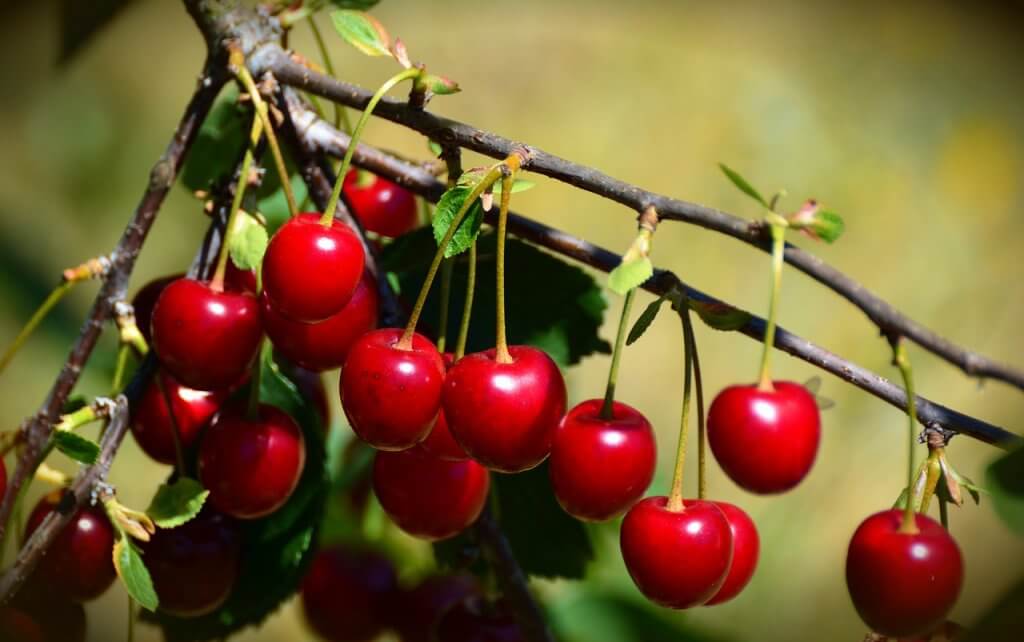«I have cherry trees, and every year I can’t manage to eat a single cherry. “Once they start to ripen, the birds eat them all.” If this sounds like you, this article will show you four ways to keep birds away from cherry trees and keep them from eating the cherries.
If you’ve grown luscious cherries, chances are you’ve had uninvited guests feast on the fruits of your labor. Birds love cherry season and can decimate a tree in no time. Outsmart these thieves with proactive measures to safeguard your crop. Utilize these 7 proven tactics for keeping birds away from your precious cherry trees.
Use Netting
Netting is one of the most reliable physical barriers for protecting cherry trees from birds. Drape bird netting completely over trees anchoring it to the ground. Ensure there is ample space between the net and outermost branches so birds cannot reach or get trapped in the fruit. On smaller trees, construct simple wooden frames around the canopy to fully enclose trees before adding netting. Check netting routinely for tears and secure any loose edges.
Install Scare Devices
Deter birds by surrounding trees with ominous scare devices like flash tape, aluminum pie pans, inflatable snakes, and fake predators Rotate the location of scare tactics every few days so birds don’t become accustomed Distress calls and loud sounds from propane cannons or bangers can also startle birds away.
Provide Alternative Food Sources
Keep birds satiated and distracted from your cherry crop by offering them alternative food sources. Set up bird feeders and platforms stocked with millet, sunflower seeds, cracked corn, and other bird-friendly foods away from your cherry trees.
Employ Chemical Repellents
Apply non-toxic chemical bird repellents on and around cherry trees via spraying or fogging. Products like Avian Control contain methyl anthranilate, a grape flavoring naturally aversive to birds. Use at the first signs of bird interest, reapplying every 7-14 days. Avoid spraying repellents directly on ripening fruit.
Harvest Early and Often
Pick cherries as soon as they ripen, even if you don’t plan to use them right away. The less fruit left on trees, the less allure for birds. Store freshly picked cherries in the refrigerator for 5-7 days. Repeat harvesting every couple days once cherries start reddening to get them before the birds do.
Cover Individual Limbs
On small trees or those with limited ripened fruit, enclose individual fruit-laden branches in mesh bags secured at both ends. Monitor enclosed limbs daily and remove covers once fruit is picked. This focused approach minimizes labor compared to netting entire trees.
Remove Bird Perches
Eliminate any branches, fence posts, wires, or other perches giving birds easy landing access. A clean perimeter surrounding trees forces birds to forage while flying, which they’ll eventually find too tiresome. Remove fallen fruit promptly as well.
With persistence and savvy, you can outsmart those feathered thieves. Implement a multi-pronged action plan using several of the above tactics simultaneously for the best success safeguarding your cherry harvest. Here’s to full baskets of sweet, bird-free cherries!
Method 1 – Visual Bird Repellers to Protect Cherry Trees
There is a wide range of visual bird deterrents: scare-eye balloons, owl replicas, hawk figures, and other birds of prey… Among this wide range of visual bird deterrents, we recommend the Falcon Kite Scarecrow as the most effective solution.
To prevent birds from getting used to these visual bird deterrents, it’s important that they are not static. They need to move with the breeze. It’s also important to change their positions frequently.
We recommend the following articles:
- Read Tips for Choosing an Effective Scarecrow Figure to learn what to think about when picking out a scarecrow to keep birds away.
- Falcon Kite Scarecrow to discover its key features.
The bird deterrent should be put up before the cherries ripen so that the birds are already used to pecking at them. As the saying goes, «prevention is better than cure»….
If there are already a lot of birds in the cherry tree, the visual bird deterrent might not work to keep them from eating the cherries. In that case, use it as a complement to other more effective bird control measures explained below.
Method 2 – Bioacustic Bird Repellers to Prevent Birds from Eating Cherries
These bioacustic bird repellers emit sounds that scare birds away.
So, these bioacoustic bird deterrents make noises that are a mix of sounds of predators like hawks, eagles, and falcons, as well as sounds of birds we want to keep away, like sparrows, thrushes, starlings, blackbirds, and so on. It sounds like a bird of the same species is telling them, “Let’s go! There’s danger!” when birds hear these sounds.
Have trouble with birds? Read “I Have Problems with Birds, What Type of Bird Repeller Do I Need? “, which compares a number of sound bird scarecrows.
Bird Gard sonic bird repellers are a reliable solution. As a way to keep birds away from cherry trees, they work year after year and are safe for the environment.
In this article, farmer José Luis López Budia from Cifuentes (Guadalajara) talks about how he kept his cherry orchard safe from over 300 thrushes.
Keep Birds Off Fruit Trees And Gardens With 4 Simple Tricks
FAQ
How do I stop birds from eating my cherry tree?
How do I protect my tree fruit from birds?
What birds eat cherry trees?
What do farmers spray on cherry trees?
- The Ultimate Guide to Growing Strawberries in Raised Beds - August 8, 2025
- No-Dig Garden Beds: The Easiest Way to Grow a Beautiful Garden - August 6, 2025
- How to Protect and Preserve Wood for Raised Garden Beds - August 6, 2025

